In this sport, a prominent role is played by longboard deck types chiefly because they get rolling effortlessly, the ease of foot-braking and the overall stability that they offer.
Longboards are usually not tailored for tricks and spared the harsh conditions imposed by skating tricks, run for longer durations provided you don’t longboard too often in the rain and they are stored well covered.
Longboards are used to surf as well though the board style is more of a shortboard.
Types of Longboard Decks – Key Differences
Based On Materials
1. Maple
The most common type of longboards encountered is made up of thin sheets of veneer or ply.
These are made of Baltic Birch or Maple wood. Multiple sheets of veneers are stacked atop each other, glued and subjected to a compressive force to get pressed into shape.
The number of veneers used is different for different boards but the rule is the more the number of veneers renders the board stiffer and heavier.
2. Bamboo
Shooting up in popularity in the longboard world are bamboo laminates. These are vertically pressed into sheets and then encased or sandwiched in fiberglass or alternate composite materials.
The end result is a light to medium board, it is soft and has flex and lastly imparts a powerful spring-like attribute.
3. Carbon Fiber
It is the most expensive construction of the three and employs blended materials like carbon fiber. A lightweight wood, say bamboo is ensconced in a fiber sheathing creating a very light core.
This is then wrapped in a composite material like carbon fiber to deliver the rigidity. These features of rigidity combined with a lightweight curry much favor among downhill longboarders.
Based On the Deck Shape
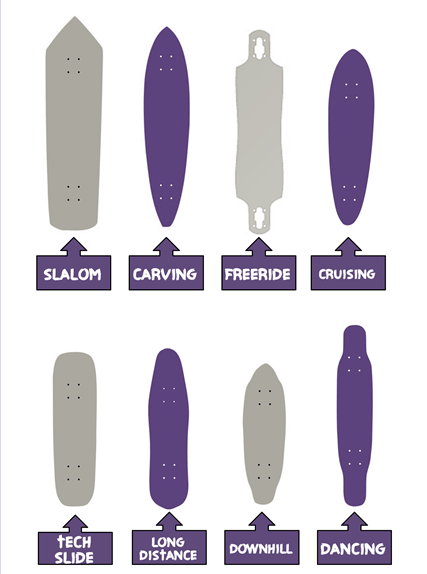
There are generally two broad classes of deck shapes –
- Directional – These are meant to travel in one direction; forward
- Twin (symmetrical) – It looks and feels the same regardless of the direction being faced
There is a whole lot to longboards than what meets the eye. They come in a good variety of shapes for varying riding styles and abilities. So in this write-up, the main endeavor is to toss the guesswork out and get you out longboarding.
Cruisers
Longboard cruiser decks come recommended in sizes from 28-35” long. They are provided with kicktails to negotiate potholes, cracks and other obstacles. They are maneuverable and fast. Significant weight diffusion is possible because of the flat deck. It is a reliable and no-nonsense rig.
Downhill
Downhill requirements face two tests- speed and sharp turning ability. The shape is directional and they need to be of stiff construction. For beginners, a wheelbase of at least 25” will do the trick. The deck is flat
Commuter
Commuter longboards are a hybrid between different forms of skateboards and cruisers. You are most probably traveling in the city. Swift, sudden braking and sharp turns are essential. A longer wheelbase of 28-30” is recommended providing more stability.
Weight plays a significant role as you will be getting off and picking up your board frequently at traffic crossings, traffic snarls, etc.
Freeride
For traversing across steep roads and paths, Freeride longboards accomplish this by gliding from side to side, like snowboarders. They sport symmetrical shapes with a deep concave so that your feet can be locked.
Concave Shapes
Let’s touch on the concavity of decks as it is a major factor in the performance of longboards. Manufacturers are constantly experimenting with original, new designs to cater to new deck styles. A concave shape confers a solid foothold and can take sliding, turning, and drifting to a new benchmark.
Here are a few concave designs you will encounter in both longboards and skateboards.
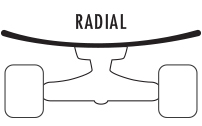
Among common deck profiles, the radial concave is hot selling.
The concave offers better foot grip and is of use in all types of skateboards and longboards
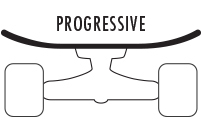 This shape is similar but more pronounced compared to radial concave. The wider support doubled with the rail wall steepness gives firm footing and a locked-in sense.
This shape is similar but more pronounced compared to radial concave. The wider support doubled with the rail wall steepness gives firm footing and a locked-in sense.
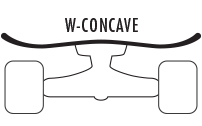 The W-shape is restricted to the tail end only and does not extend the full length. The centerline extra curve helps to shift energy from heel to toe which results in an exact, responsive quick turning board.
The W-shape is restricted to the tail end only and does not extend the full length. The centerline extra curve helps to shift energy from heel to toe which results in an exact, responsive quick turning board.
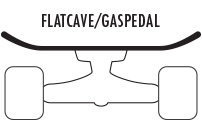 Also dubbed as tub concave, is somewhat the same as a radial board but the gentle curve is replaced by rails that jut sharply up. The feet stay flatter, the ride mellower, the sharp rails able to provide sudden shifts in energy
Also dubbed as tub concave, is somewhat the same as a radial board but the gentle curve is replaced by rails that jut sharply up. The feet stay flatter, the ride mellower, the sharp rails able to provide sudden shifts in energy
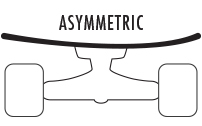 An asymmetric concave is when the rails on one side rise at a varying angle. This permits riders to put more ability to turns into the heels.
An asymmetric concave is when the rails on one side rise at a varying angle. This permits riders to put more ability to turns into the heels.
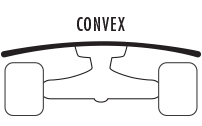 An upward arching deck is the trademark of these boards and are not commonly used. Downhill and slalom longboarders admire the natural foot placement possible with these boards.
An upward arching deck is the trademark of these boards and are not commonly used. Downhill and slalom longboarders admire the natural foot placement possible with these boards.
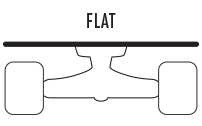 Zero concavity is something seldom seen. Cutout and dropdown longboards feature flat decks as you get ample foot room permitting sufficient area for boardwalking and other tricks.
Zero concavity is something seldom seen. Cutout and dropdown longboards feature flat decks as you get ample foot room permitting sufficient area for boardwalking and other tricks.
Based On Styles
Top Mount
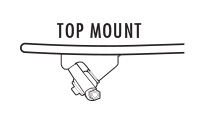
The most conventional board shape is the Top Mount. It is also the least costly. As the name suggests, the deck is mounted above the trucks, raising the center of gravity as contrasted with other boards.
Given that there is a decrease of stability which is made up for by the nimbleness that dropped boards cannot provide. This facilitates a betterment in turn leverage.
Top Mounts are very adaptable and can be used for carving, cruising, downhill, freeride and freestyle.
Drop Through
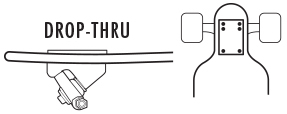
Longboard cruisers greatly favor the Drop-thru truck mountings. Rather than attaching the trucks through the mounting holes, the boards have cutouts in the nose and tail.
The trucks are dropped through and attached on the sides. You get more stability but lose responsiveness. Pushing and breaking become easier. These boards are recommended for commuting, freeride and downhill riding styles.
Drop Deck
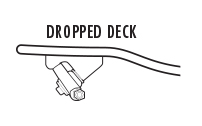
In a dropped deck, the attachment of the trucks is conventional Top Mount style. The deck itself drops down to the middle of the deck leaving the nose and tail elevated.
Naturally greater stability is bestowed because of the low center of gravity. This confers better slide control. The steepness of the deck varies from one board to another.
Double-Drop Deck
An amalgamation of a Drop Deck on Drop-Thru truck mountings is called a Double Drop which is a favorite among some skateboarders and longboarders.
With the board set low, it faces the disastrous consequences of rail bite which is the side rail coming into contact with the ground. The solution is to choose wheels of a larger diameter to counter the effects of a low board.
So that was a concise presentation of the types of longboards you can choose from. But it is strongly suggested that you put a good deal of thought into what exactly you need.
Don’t let cool rule your heart. Longboarding is an intricate and technical sport that can be mastered through practice and more practice.
Honorable Mentions
- Freestyle Longboard
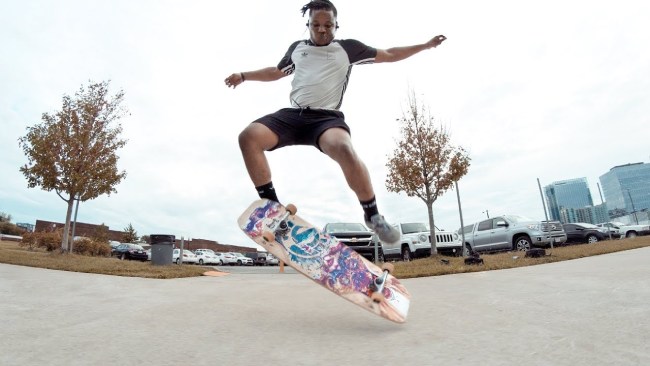
Don’t get confused between freeride and freestyle. A lot of people think these two are similar, but the truth is there’s a major difference.
As we know freeriding needs a lot of speed, but freestyle is slower than that. They are normally medium-sized (35-40″ long) with an even shape, flexible, and kicktails on both sides.
The main purpose of freestyle skates allows rides to do tricks and get creative with fancy footwork.
Freestyle boards are bigger than freeride boards. For that reason, performing tricks on the freestyle board is much easier to learn. It’s also very enjoyable for experts and pro riders.
- Dance Longboard
When it comes to “Dance” longboards, we already know what’s the main purpose of it, Dancing! Dancing on a longboard is much popular in Europe. However, it’s hard to master the tricks on dance longboards.
So, you can start with a cruiser because of the smaller type. It will be easier to learn at the beginning.
The prime feature of a dance longboard is its size, which is huge. It helps skaters to move around, walk on the board, and do exciting tricks. The dance longboard has a kicktail that helps to do the dance moves.
FAQs
1. Which type of longboard is the easiest to ride?
Ans: Based on our experience, if you want to start you should go for a cruiser longboard. I will recommend getting a longboard not less than 30” and 8.5 wide. A long and wide board will be easier for you to adjust. The wheel’s size should be (60mm- 80mm) and the softness should be (77a-83a) for maximum ease on the cracks and bumps.
2. Is longboarding a good exercise?
Ans: Longboarding is a great exercise. It burns 240 to 420 per hour. A solid piece of aerobic activity. It helps your body strength and increases your body’s flexibility.


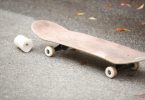
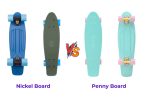
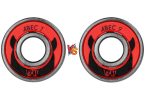
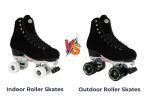
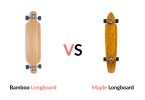


Leave a Comment